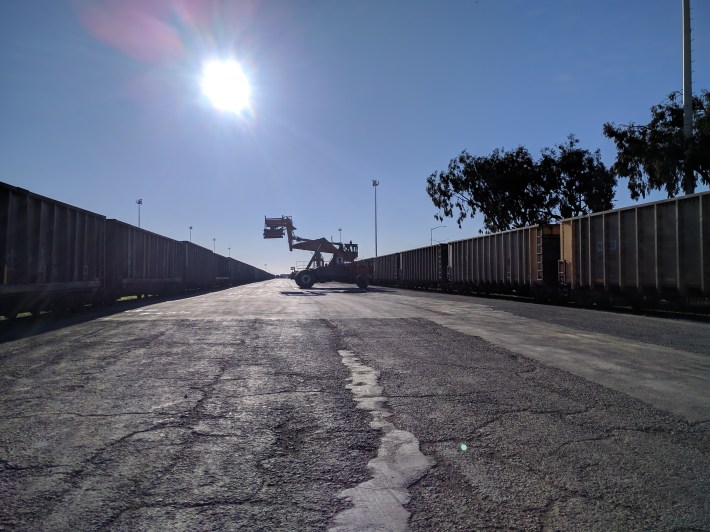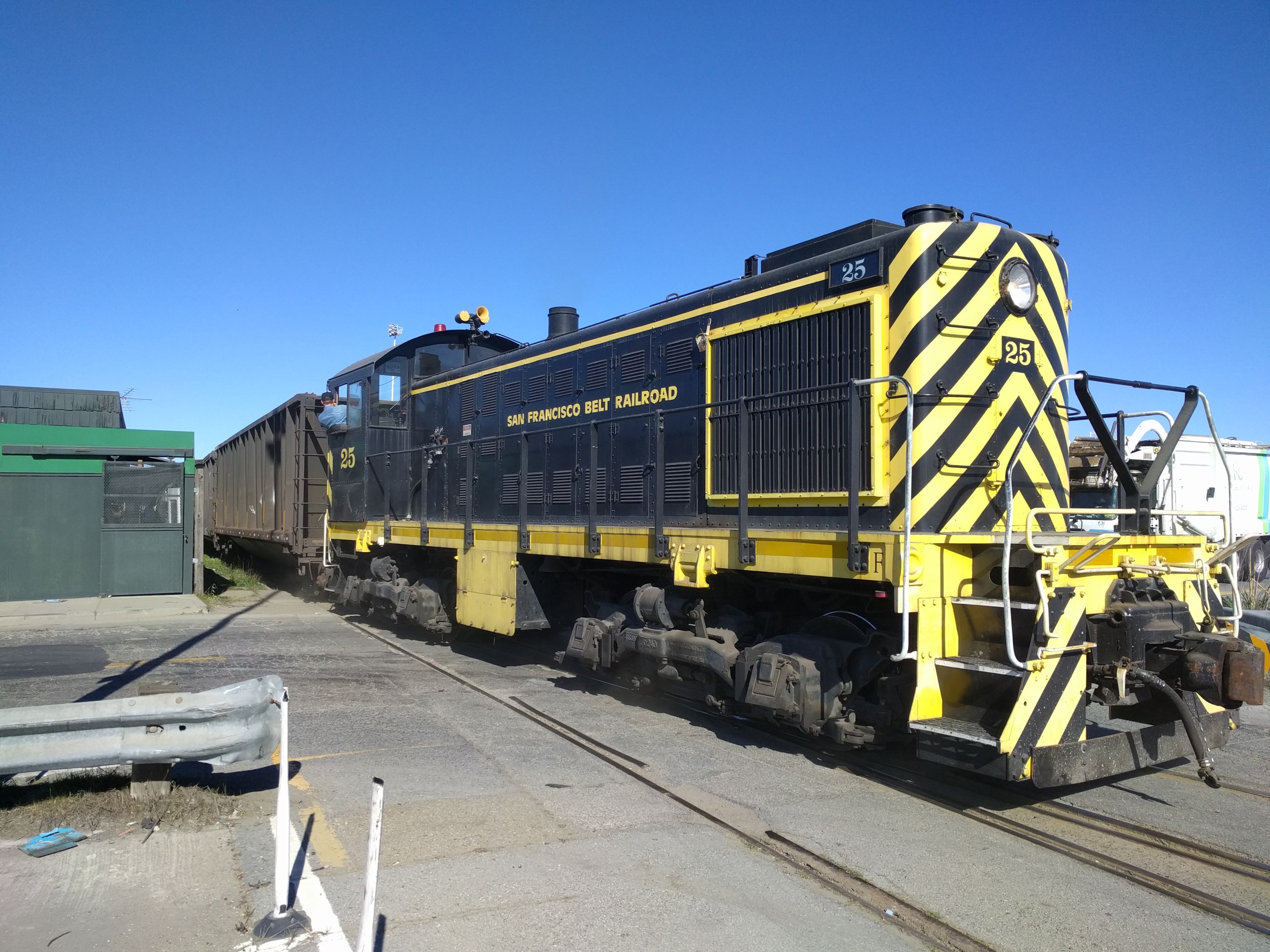San Francisco's economy is surging. Construction is booming. But whenever a building goes up, huge holes have to be dug for the foundation. So where does all that dirt go?
"This load is from the project at 1066 Market," explained Nick Kendall, Manager of Rail Operations and an engineer at the San Francisco Bay Railroad in Hunters Point, pointing at a rail car. "If you factor the truck returning empty from the closest landfill, 250 miles from SF, the roundtrip would mean each railcar takes 10 trucks off the highway."
The railroad currently operates some 350 "high-sided gondola cars," carting off dirt from all the construction projects going on in the city, including the Chase Arena.

Every day, trucks shuttle bins of dirt and debris from San Francisco construction sites.

The bins are lifted off the trucks and dumped into the giant gondola train by rolling cranes, as seen in the pictures below:
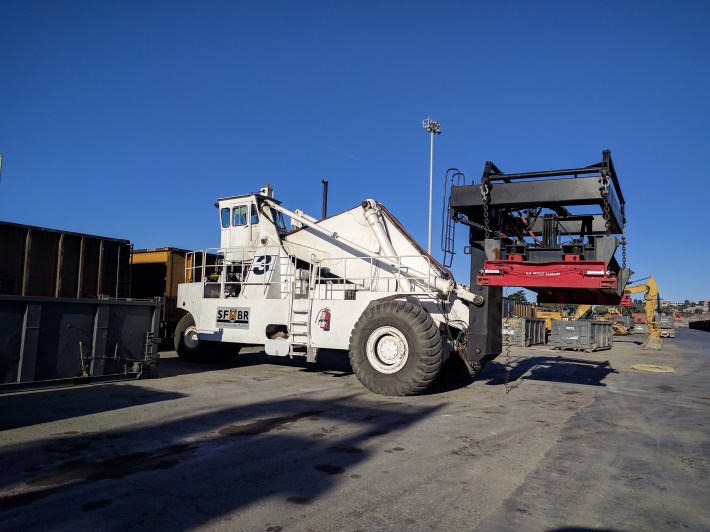

Once the gondolas are filled, the railroad uses two small locomotives to create unit trains that can be as much as 70 cars long. The Union Pacific will then pick them up in the late morning or early afternoon with larger, long-haul locomotives. They also drop off empty cars from the previous load. The Union Pacific takes the trains down a connector track to the Caltrain mainline to get rid of all that dirt in a location outside of Salt Lake City.
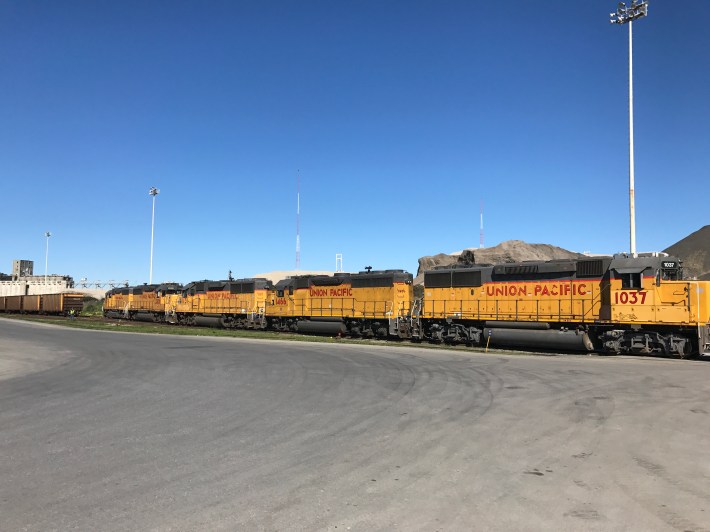
The round trip is about 2,000 miles, explained Kendall, and takes 55 hours each way. At the other end of the run, a giant machine picks up the rail cars and spills the contents out. "There's now a whole lot of San Francisco in Utah," said Kendall.
Work starts early for the Bay Railroad. At 4 a.m. the freight short line's 15 employees start getting trains ready for the day's drop-offs of dirt. This is often hard, manual work--with lots of running around.
Conductor Ben Margherone and Kendall first meet and go over a list of what train cars have to be put on what track. Then Margherone throws switches, connects and disconnects cars, and instructs Kendall how far to back up and go forward with the train, to make sure everything ends up where it's supposed to be.
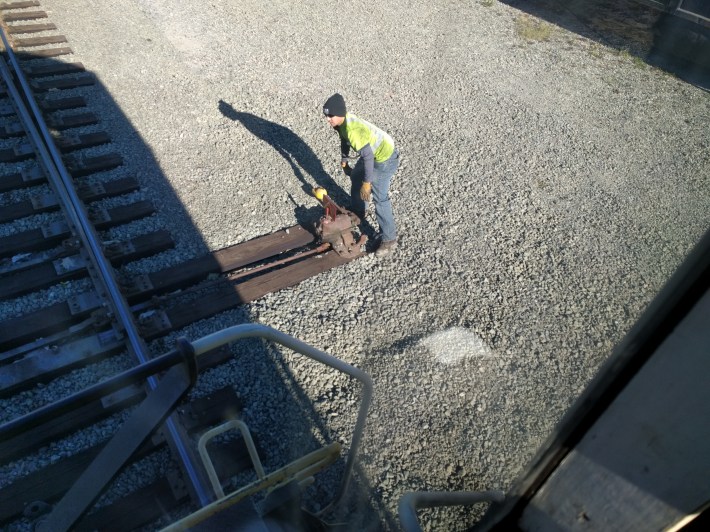
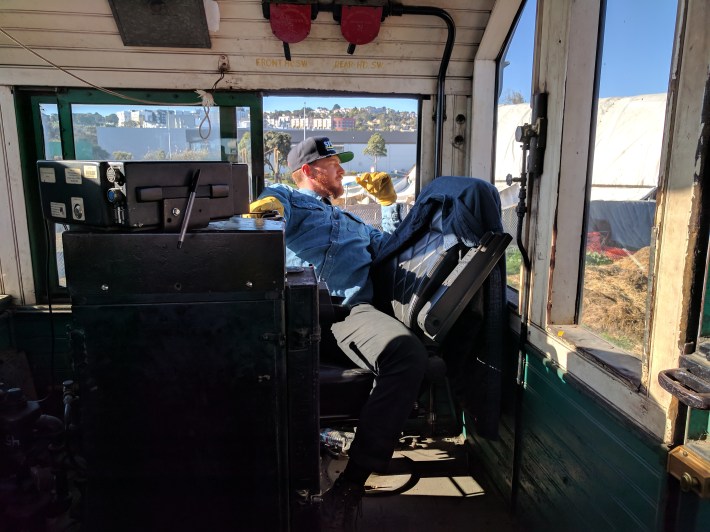

A point of aggravation for the railroad: at the far end of the yard, there's a grade crossing where Recology garbage trucks drive to their facility. Even though there are big signs that say not to drive on the tracks, they often do.
The truck drivers and other motorists frequently ignore bells and warning horns and drive right in front of the oncoming train. Yard operations are slow--the train only goes about 10 mph--but every time Kendall has to brake and stop it can take "30 to 60 seconds to get moving again."
So far there hasn't been a collision, but the scofflaw truck drivers and motorists cost the railroad money. "A significant amount of time is wasted," said Kendall, who also said he has "talked to" some of the drivers about it.
Meanwhile, the railroad isn't satisfied with just taking polluting trucks off the road. They run their locomotives on bio-diesel. They are also in the process of purchasing a new, "Tier 4" cleaner burning locomotive, in part using a grant from the Bay Area Air Quality District.
And, rather than use chemical herbicides to keep their tracks free of vegetation, they found a far more environmentally friendly (and furry) solution--they maintain a heard of goats.

In fact, as part of the railroad's morning ritual, the trains stop to let the goats out of their corral and up to a nearby pasture. The goat heard is now more than big enough to keep the railroad clean, so it's turned into a side business called "City Grazing," which is hired out to clear vegetation.
Back in its heyday, the railroad's precursor, the Belt Railroad, used to stretch all the way to Fort Mason. Back then, the railroad offloaded cargo ships at San Francisco's main piers. But as shipping moved over to Oakland and the SF waterfront was developed for offices and residences, that business dried up.
But with the recent building boom, the Bay Railroad is growing again, even adding more tracks in the yard. Kendall said the railroad shipped 3,800 rail cars in 2017, 2,200 in 2016, and 1,700 in 2015--that's a hell of a lot of trucks taken off the highway.
That said, the railroad faces a huge challenge moving forward. In its deal with Caltrain, Union Pacific plans to abandon the corridor after it is electrified. A new operator is supposed to come in and take over, but Kendall is worried that may not pan out--in which case the Bay Railroad would have no way to get its trains out to the rest of the country's rail system.
But the Bay Railroad has found a way to survive up until now and considering its significance in reducing truck pollution from construction projects, one has to hope the Bay Area will find a way to keep it running.
